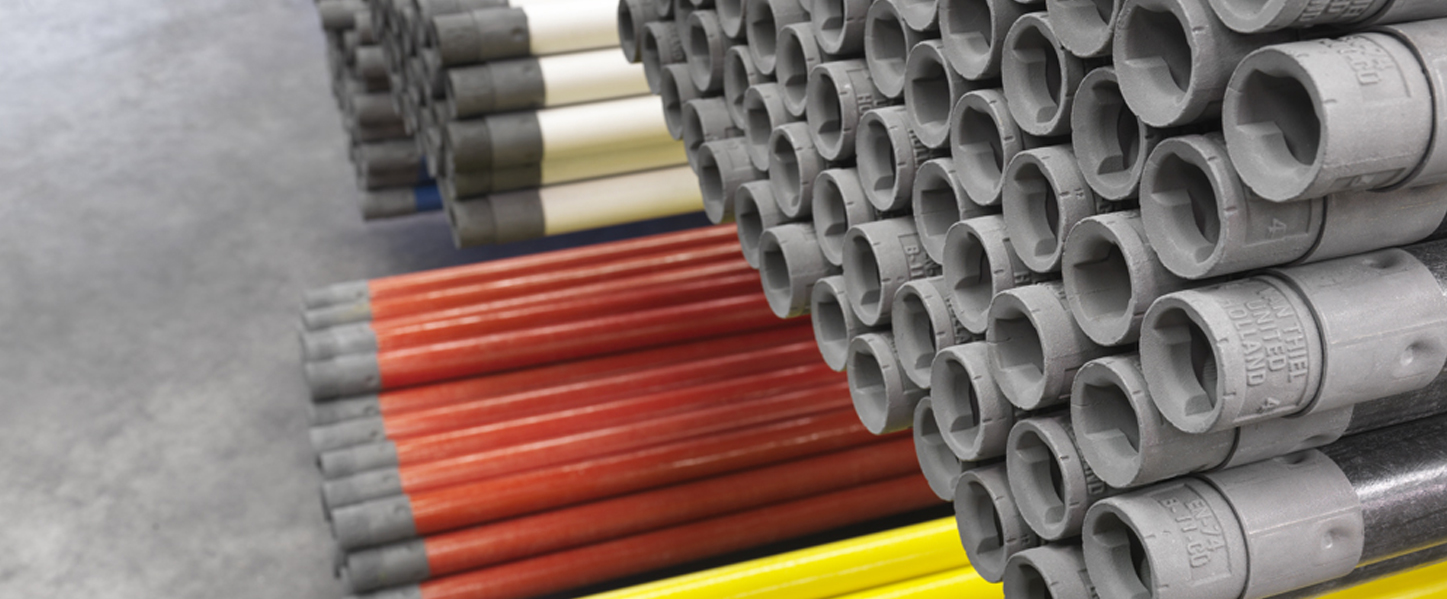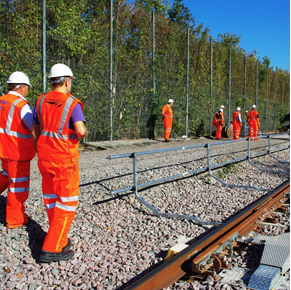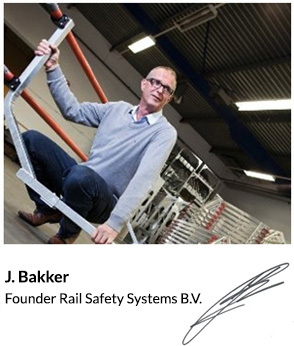About us
Our Engineering team is developing additional safety opportunities, all based upon our patented magnetic technology that will contribute to further growth and increase safe working circumstances for railway workers.

Our Engineering team is developing additional safety opportunities, all based upon our patented magnetic technology that will contribute to further growth and increase safe working circumstances for railway workers.

RSS started offering fall protection systems on both flat and sloping roofs more than a decade ago. The system had to be light, easy to work with, with fast assembly and disassembly capabilities, but above all it had to be safe and secure.
Based on these principles new products have been developed for other markets, one of which was for the rail infrastructure. For the rail maintenance activities we developed the RSS Magnetically Attached Safety Barrier. The system provides a barrier with sufficient rigidity to resist the lateral force of a man falling against it from the worksite. We developed the RSS Magnetically Attached Safety Barrier system in-house with our own Research & Development team in close cooperation with large railway operators. In 2010 we separated these activities in a dedicated Business Unit, called Rail Safety Systems.
The first 3 years of our existence were absorbed in achieving the requisite permissions, authority and approvals of the system in the most important markets in Europe, as often railway regulations and legal systems are far from harmonized neither in the EU nor worldwide. Meanwhile our direct sales team is able to offer tailor made solutions for the individual markets in the Benelux, Austria, Germany, Great Britain, Switzerland, France and Turkey.
Other European Markets and Rest of World opportunities are exclusively covered by our strategic partner, the Goldschmidt Thermit Group based in Leipzig Germany.
Our Engineering team is developing additional safety devices, all based upon our patented magnetic technology that will contribute to further growth and increase safe working circumstances for railway workers.

Innovative, Continuous Improvements, Ethical, Reliable, Safe, Simple

It is Rail Safety Systems’ mission to innovate, develop, manufacture and provide systems that are specifically designed to improve safer working environments for railway workers.

We believe, and have demonstrated that we are able to offer innovative, economic and ergonomically based solutions with our patented magnetic technology that not only benefits our customers financially by saving both time and resources, but in addition considerably reduces the potential for injuries to the workforce at worksites by improving safe working practices.

It all started with an idea to improve safe and secure working conditions for workers on the roof, mainly roofing contractors, but also for the increasing installations of solar systems.
The traditional safety systems were labour intensive and therefore often avoided in order to save time, despite the risk of fatal incidents. Being active in and around roofing activities for almost all of my professional career I spent a lot of thinking about alternatives or solutions to distinguish from competition in combining safe systems and a sharp reduction of time that should ultimately lead to increased profit for our customers.
Once the system was engineered, tested and approved I decided to start a separate company for marketing and sales of the fencing system, that was the base for Rail Safety Systems eventually.
Currently I am proud being able to manage a dedicated and motivated team that is constantly in contact with our customers, not only for sales but also listening to their daily challenges for optimizing safety and security, all using the concept of our exclusive magnetic based system. I am sure there is a long and successful future ahead of us and we are just at the beginning of rolling out.
J. Bakker Founder Rail Safety Systems B.V.